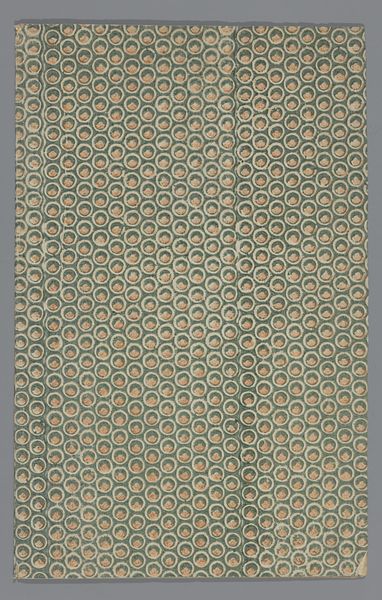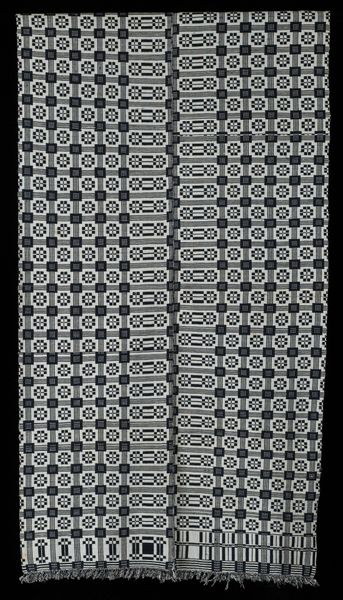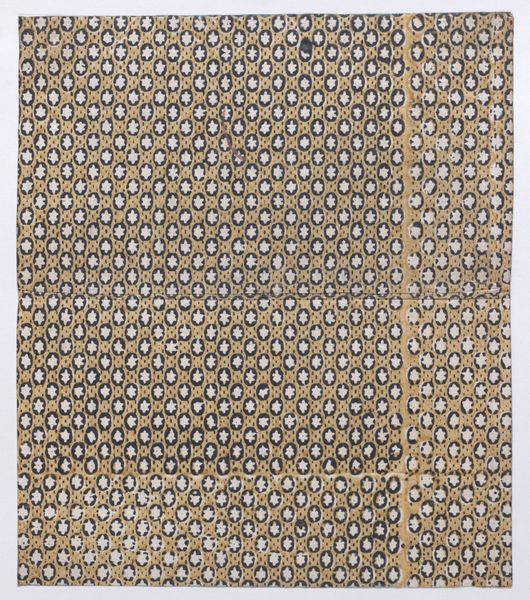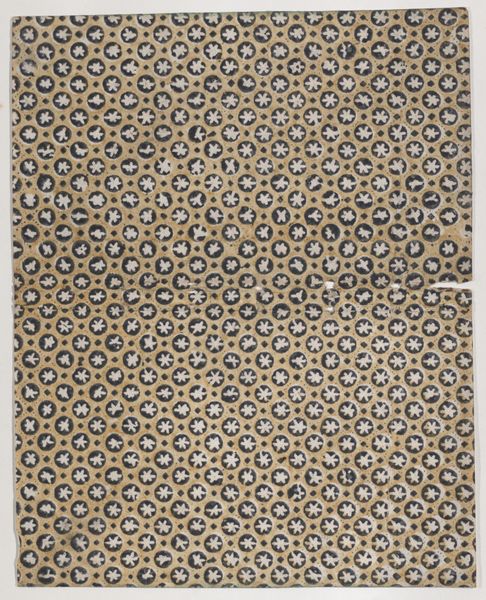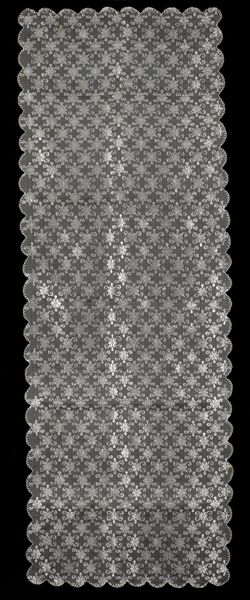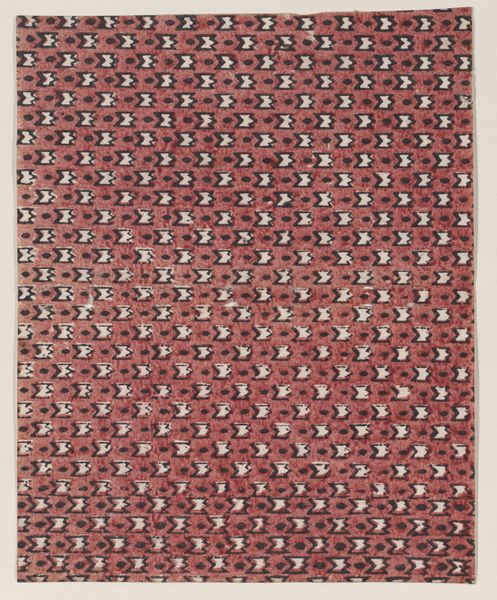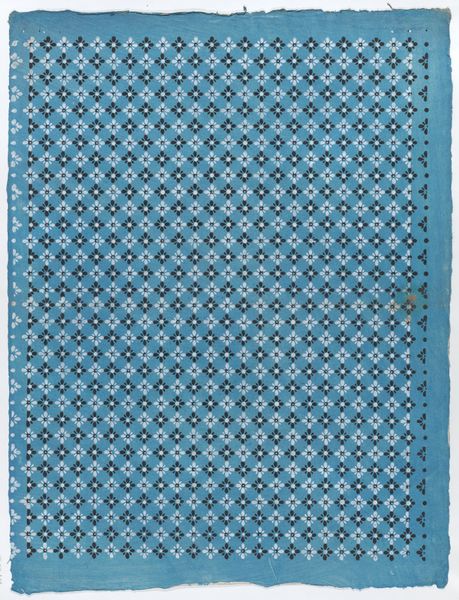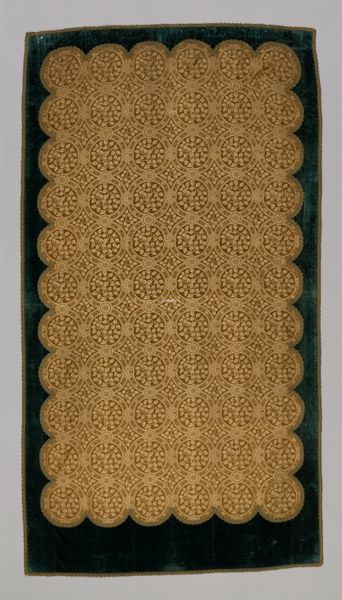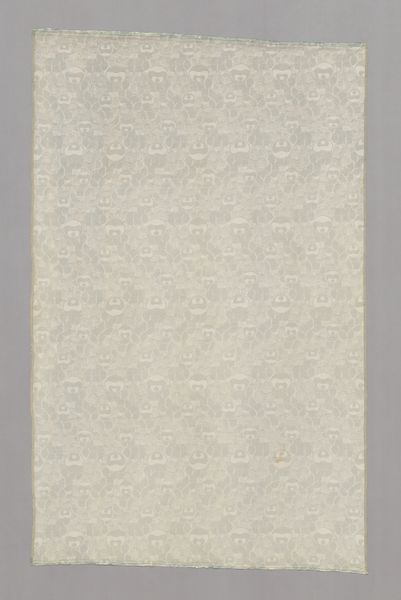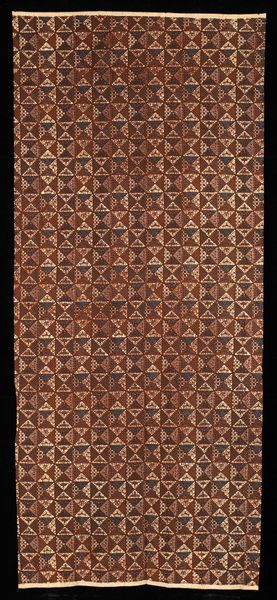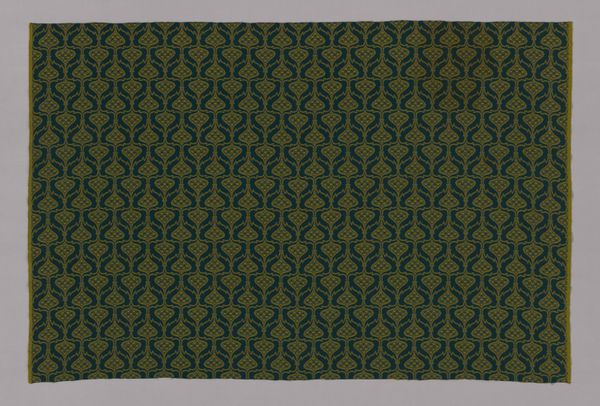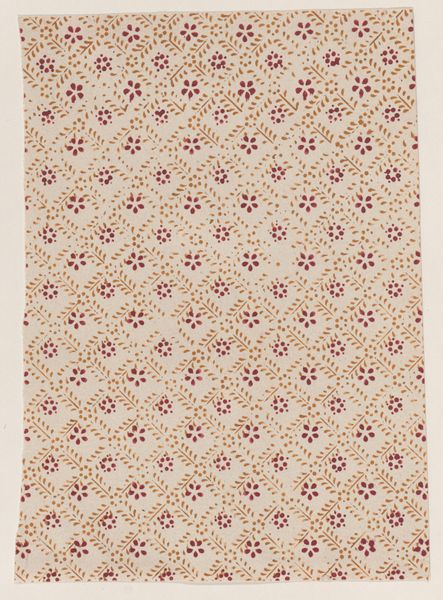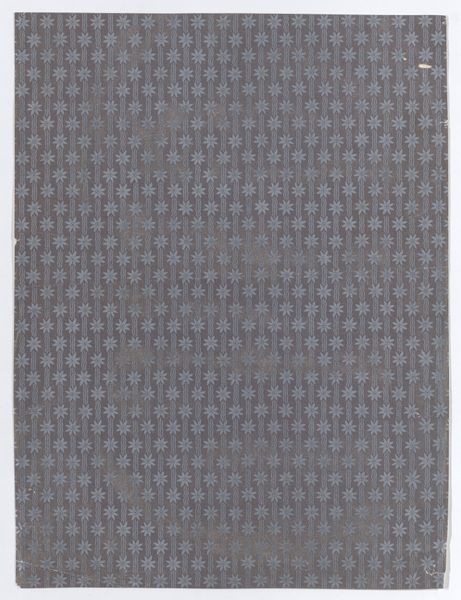
#
geometric pattern
#
geometric
#
decorative-art
Dimensions: height 204 mm, width 333 mm, thickness 2 mm, height 398 mm
Copyright: Rijks Museum: Open Domain
Curator: At the Rijksmuseum, we have a print album page, created sometime between 1704 and 1762. It's currently attributed to an anonymous artist and titled "Prentalbum met trofeeën". Editor: It looks almost dizzying, actually. A repetitive pattern that speaks to some long-lost textile design, I’d wager. The materiality almost disappears behind the regularity of these…are those floral emblems? Curator: Perhaps. Visually, there's a constant reiteration of circular shapes filled with forms that could reference classical military trophies. Think stacked armor, weapons, banners... though the abstraction softens any explicit violence. Instead, we perceive a dance of symbolism—the circular motif, promising cyclical regeneration and infinite legacy, paired with emblems evoking historical military prowess. Editor: It’s quite intriguing when considering labor – what kind of skill and division of labor made the replication and proliferation of these design possible? The question of printing plates, transfer techniques, all these practical details begin to take shape, alongside some anonymous labour involved... How readily were these patterns dispersed among artisans, what purposes could these patterns perform, besides wall decoration. Curator: Absolutely. We are considering also questions of status. Ornamental trophies displayed on objects or buildings throughout the era helped reinforce established order, referencing antiquity and alluding to grandeur. Even within this highly regularized structure, the idea that memory and status are interwoven becomes quite compelling. The repetition functions somewhat like a wallpaper motif, perhaps intending to establish or reify its social codes into daily experience through exposure, a means to normalize authority? Editor: It strikes me, though, that while evoking power, there’s an element here that feels diluted and mass produced to an extent, almost generic... it can barely assert that power beyond that, due to the design's lack of distinct characteristics... It looks mass-produced rather than regal. Curator: I would agree with this observation. Perhaps the original aim got partially transformed in later replications; these later processes tend to strip the artwork down into something far divorced from their own source, ultimately changing our understanding of a sign over long term exposure. Editor: Very well put. Thinking more about craft and reproduction provides some intriguing context to interpreting its significance. Curator: Indeed. We appreciate having looked into it with more historical insight.
Comments
No comments
Be the first to comment and join the conversation on the ultimate creative platform.
